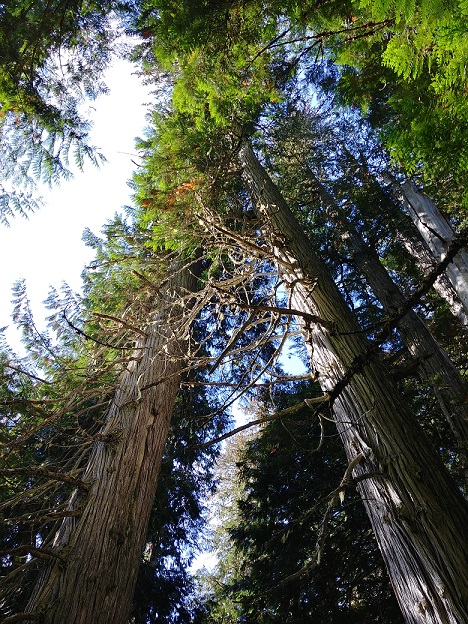Old-growth logging has been put on hold for 2.6 million hectares of at-risk forest across the province while a new forest management plan is created.
B.C. officials said the temporary measure will prevent irreversible biodiversity loss while Indigenous nations, the provincial government and other partners develop a new approach to sustainable forest management.
According to the government, this approach will prioritize ecosystem health and community prosperity, based on recommendations in the Old Growth Strategic Review.
“Forests are a part of who we are as British Columbians. We have a responsibility to ensure the benefits are shared, today and with future generations,” said Premier John Horgan. “Following the recommendations of the Old Growth Strategic Review, we are taking steps to fundamentally transform the way we manage our old-growth forests, lands and resources.”
Indigenous nations rights and titleholders have been provided with details of these forest stands, allowing them to advise on how to proceed on the deferral areas within their respective territory.
Government officials said Indigenous nations have been asked to indicate within the next 30 days whether or not they support the deferrals, require further engagement or would prefer to discuss the issue through existing treaties, agreements and other constructive arrangements.
The provincial government will support the deferral process by immediately ceasing any advertising and sales of BC Timber Sales in the affected areas.
“We’re building a new vision for forest care to better share all the benefits of our forests together, for generations and generations to come,” said Katrine Conroy, Minister of Forests, Lands, Natural Resource Operations and Rural Development. “We are committed to working in partnership with First Nations to make sure we get this right and to supporting workers and communities as we develop a sustainable approach to managing BC’s old-growth forests.”
When the deferral period ends, the newly identified at-risk forest will either be added to the 3.5 million hectares of old-growth forest already off-limits to harvesting or it will be included in a new forest management plan.
The government will work with Indigenous groups to provide clarity on what forest areas would be protected in perpetuity, may be harvested under strict conditions that prioritize ecosystem health and areas that can be accessed for sustainable timber management.
“A commitment to partnership with First Nations and integrating their perspectives on land is fundamental to facilitating the required paradigm shift in forest management that includes old growth as a key component of ecosystem health,” said Garry Merkel, one of five members of the independent technical panel, and co-author of the Old Growth Strategic Review. “Once temporary deferrals are in place for the most at-risk ecosystems, government can turn toward implementation of the remaining recommendations of the strategic review and developing a new path forward.”
Supports have also been established for workers affected by any potential job and economic impacts that may come along with new harvest restrictions.
“Programs will include connecting workers with short-term employment opportunities, education and skills training or funds to bridge to retirement. The Province will also work in partnership with business and communities to develop new supports that will assist rural communities to create jobs through diversified economies, infrastructure projects and innovation in industry,” said B.C. government staff.





